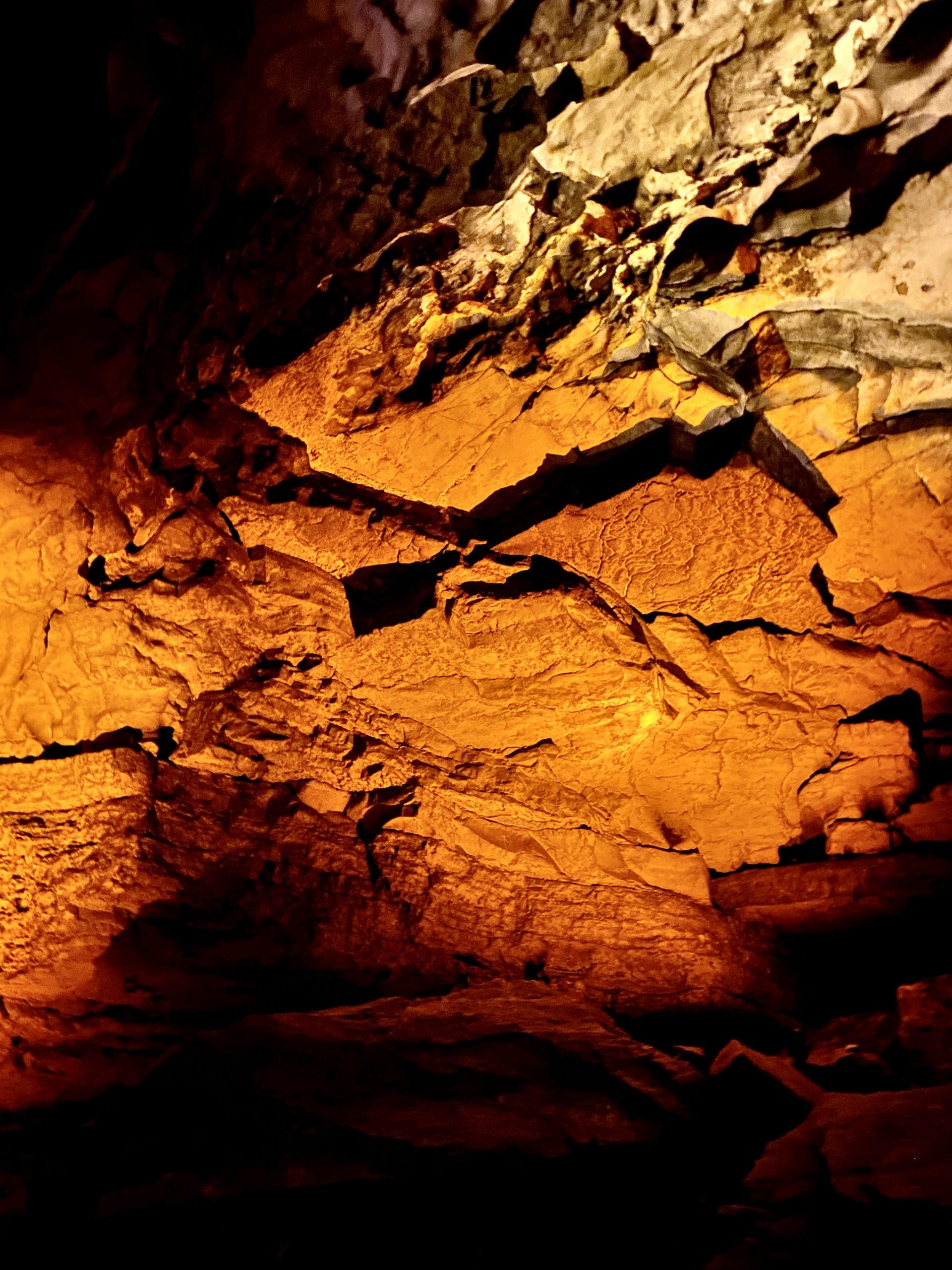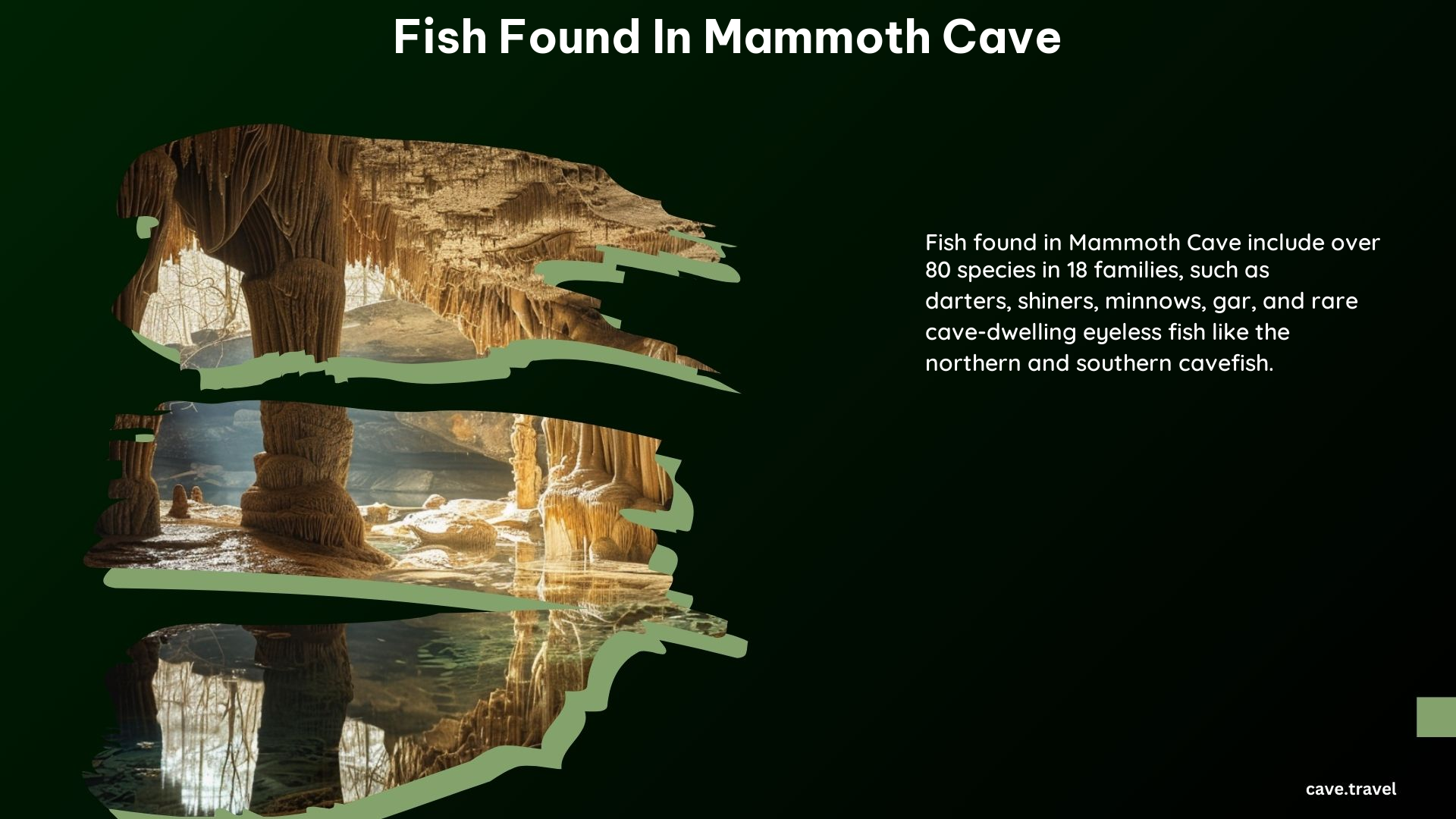Mammoth Cave National Park is home to a diverse array of fish species, both in its aboveground and underground waterways. The park’s rivers and streams support over 80 species of fish, representing 18 different families. Some of the common fish species found in the park include darters, shiners, minnows, gar, black bass, sunfish, and catfish. Additionally, the park is home to two rare, cave-dwelling eyeless fish species: the Northern Cavefish and the Southern Cavefish.
Eyeless Cave-Dwelling Fish

The two species of rare, cave-dwelling eyeless fish found in Mammoth Cave are:
- Northern Cavefish (Amblyopsis rosae): This species is found in the deeper parts of the cave system.
- Southern Cavefish (Amblyopsis spelaea): This species is similar to the northern cavefish but differs slightly in size and structure.
These eyeless fish, also known as troglobites, have adapted to the lightless, low-energy environments of the cave by ceasing to grow eye structures and unnecessary skin pigments. Their survival depends on the quality of surface and groundwater that makes its way into the cave.
Unique Adaptations

The fish living in Mammoth Cave have developed unique adaptations to survive in the cave’s environment:
- Loss of Eyes: The eyeless fish have ceased to grow eye structures, as they are not necessary in the dark cave environment.
- Reduced Skin Pigmentation: The fish have reduced skin pigmentation, as it is not necessary for camouflage in the dark cave.
- Specialized Feeding: The fish have developed specialized feeding behaviors to cope with the limited food availability in the cave.
Interaction with Environment
The cave-dwelling fish of Mammoth Cave interact with their environment in several ways:
- Food Web: The fish play a crucial role in the cave’s food web, serving as both predators and prey for other aquatic species.
- Ecosystem Balance: The fish help maintain the balance of the cave’s ecosystem by controlling the populations of other aquatic species.
- Water Quality: The fish are sensitive to changes in water quality, making them indicators of the overall health of the cave’s ecosystem.
Conservation Efforts
Mammoth Cave National Park takes several measures to conserve and protect its fish populations:
- Fishing Regulations: The park has established fishing regulations to ensure sustainable fishing practices and protect endangered species.
- Aquatic Invasive Species Prevention: The park works to prevent the introduction of invasive species that could harm native fish populations.
- Water Quality Monitoring: The park monitors water quality to ensure that it remains suitable for the fish and other aquatic species.
Visitor Information
For those interested in fishing or learning more about the fish of Mammoth Cave, the park offers:
- Fishing Licenses: No fishing license or permit is required within the park, but Kentucky Department of Fish & Wildlife regulations apply.
- Fishing Guides: The park provides information on fishing regulations, fish species, and conservation efforts.
- Cave Tours: Visitors can take guided tours of the cave to learn more about the unique ecosystems and species found within.
References
- National Park Service. (2021). Crustaceans and Mollusks – Mammoth Cave National Park. Retrieved from https://www.nps.gov/maca/learn/nature/crustaceans-and-mollusks.htm
- National Park Service. (2023). Fishing – Mammoth Cave National Park. Retrieved from https://www.nps.gov/maca/planyourvisit/fishing.htm
- Kentucky Department of Fish & Wildlife Resources. (n.d.). Green River, Mammoth Cave National Park – Dennison Ferry to. Retrieved from https://fw.ky.gov/Education/Pages/Green-River,-Mammoth-Cave-National-Park.aspx
- National Park Service. (2021). Fish – Mammoth Cave National Park. Retrieved from https://www.nps.gov/maca/learn/nature/fish.htm
- National Park Service. (2021). Animals – Mammoth Cave National Park. Retrieved from https://www.nps.gov/maca/learn/nature/animals.htm
